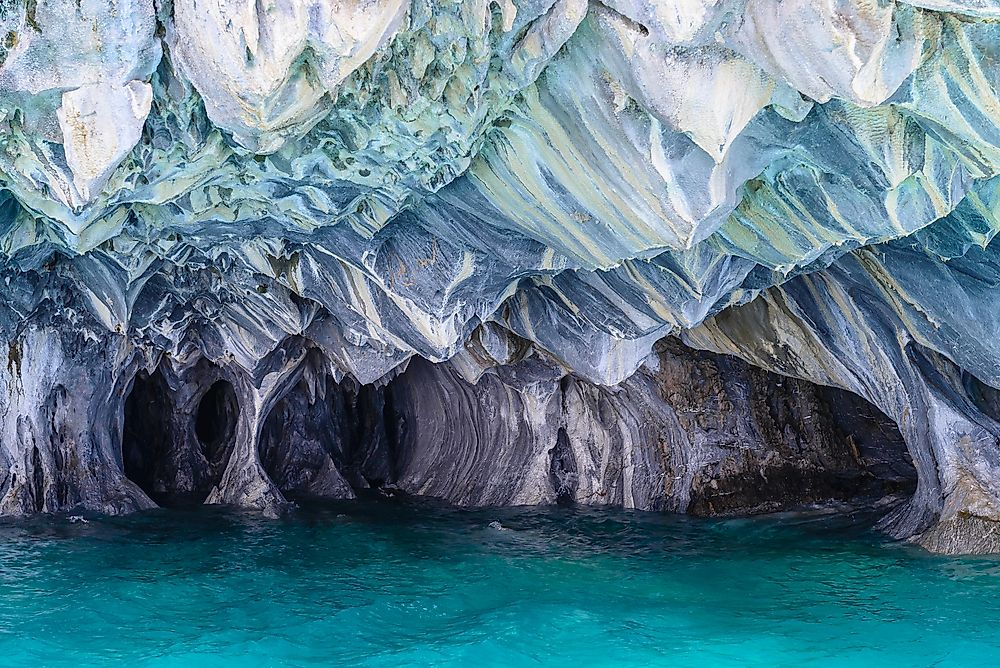The Marble Caves of Chile - Unique Places of the World

The Marble Caves of Chile are sometimes called “the Marble Caverns,” “the Marble Cathedral,” or “the Marble Chapel.” Care should be used when using these other names because they may refer to other specific features within the marble caves. In the native tongue, the caves are known as “Cuevas de Mármol.”
Location
The caves are situated in the Patagonian Andes. More specifically, the Marble Caves are sitting on a peninsula of marble that borders Lake General Carrera (as it is called in Chile). The lake is shared by Chile and Argentina and is known as Lake Buenos Aires on the Argentinian side.
Formation
The formation of the caves has taken more than 6,000 years. The caves were formed as a result of the ocean waves constantly lapping against calcium carbonate. Over time, the wave's actions smoothed the stone into what it is today, a magnificent blue wonder. Currently, calcium carbonate makes up 95% of the rocks which are estimated to weigh around 5.5 billion tons.
Habitat
The area around the lake is a typical aquatic one full of fish (such as trout and salmon), plants, and other forms of aquatic life. The land around the lake is also lush with vegetation in the surrounding range. Generally, the weather around these parts of Chile and Argentina is humid and cold. However, the regions around the lake have their own microclimate of a sunny and warm nature.
Uniqueness
The uniqueness of the caves ranges from its formation to the spectacular beauty that it is today. The beauty that is found there has taken over 6,000 years. Furthermore, the caves glow a range of magical colors depending on the level of the water. The stones themselves do not glow. Instead, the water reflects a range of cerulean hues and intensities that create a magical and tantalizing effect. During spring, the shallow levels of water reflect a turquoise hue on the caves. The high levels of water during the summer brought about by glacial melting provide a deep cerulean blue hue. At times, the reflections may also be white, grey, or the occasional pink. While they may seem ordinary on the outside, they are anything but.
Tourism
The caves are a popular destination for tourists from all around the world. Nature lovers and photographers often frequent the site. The most popular period for tourism is usually between December and February. The caves are inaccessible by road and can only be reached by boat. Tourists board a boat from a nearby remote town known as Puerto Rio Tranquillo.
Threats
The biggest threat to the caves is the water. The erosion that has shaped the caves may very well be its undoing in the future. The reason for this is because the erosion caused by the wave action is unchecked. The beautiful smooth pillars that make the caves stable may be completely eroded thus collapsing the beautiful feature. This argument becomes even more convincing while observing the feature from the outside. The topmost part looks bigger and heavier than the supporting bottom.











